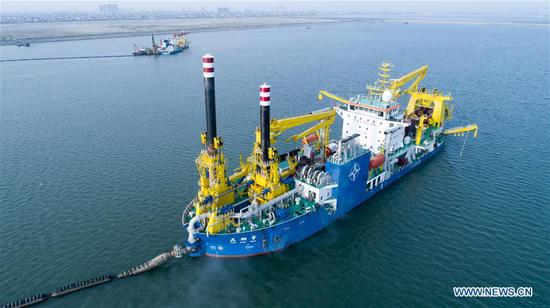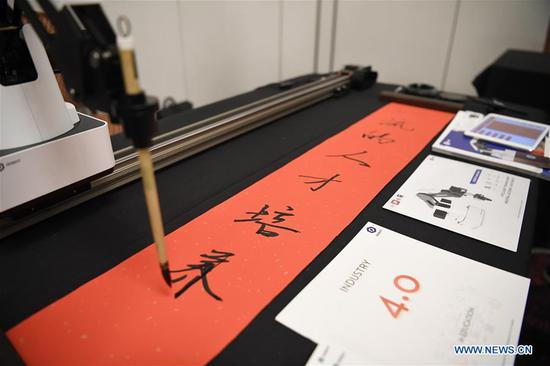
Students visit a science exhibition in Guiyang, Guizhou province in November. (Photo/Xinhua)
Space-based services
Toward the end of last year, China announced that its Beidou Navigation Satellite System had started to provide global services and that the space-based network was being used in a number of countries.
According to the China Satellite Navigation Office, 2018 was the busiest year in Beidou's construction history, as the nation launched 10 Long March rockets to position 18 satellites for the system, which also made Beidou the biggest user of Chinese carrier rockets last year. The latest satellites in the network are the 18th and 19th of the Beidou third-generation, or Beidou-3, series and were launched in late November.
Ran Chengqi, director of the China Satellite Navigation Office, said these launches completed the establishment of the Beidou-3 system's "primary constellation", signifying Beidou's entry into a "global era" from a "regional era".
Beidou is one of four space-based navigation networks along with the United States' GPS, Russia's GLONASS and the European Union's Galileo.
Since 2000, when the first Beidou satellite entered orbit, 47 system satellites, including four experimental ones, have been launched and several have been retired. Beidou began providing positioning, navigation, timing and messaging services to civilian users in China and other parts of the Asia-Pacific region in December 2012.
To date, 33 satellites-18 in the Beidou-3 series and 15 in Beidou-2-are operational in several orbits. They offer a global positioning service with 10-meter accuracy and an Asia-Pacific regional service with 5-m accuracy.
Before the end of next year, China plans to send 12 satellites into orbit for Beidou, which, by that time, will have about 30 in service and will have better capabilities and services.
In addition to Beidou, China made significant progress last year in developing other space-based assets for public or commercial purposes.
In December, China Aerospace Science and Industry Corp deployed the first satellite in its ambitious Hongyun project, the country's first low-orbit broadband communications satellite network. Demonstrating low-orbit broadband communications technologies is among the satellite's tasks.
The company intends to place more than 150 Hongyun satellites into orbit around 2023, and the number is likely to rise in response to market demands, according to Xiang Kaiheng, Hongyun's chief designer. After the network becomes fully operational, users will be able to pay to make calls and use high-speed internet services globally, he said.


















































